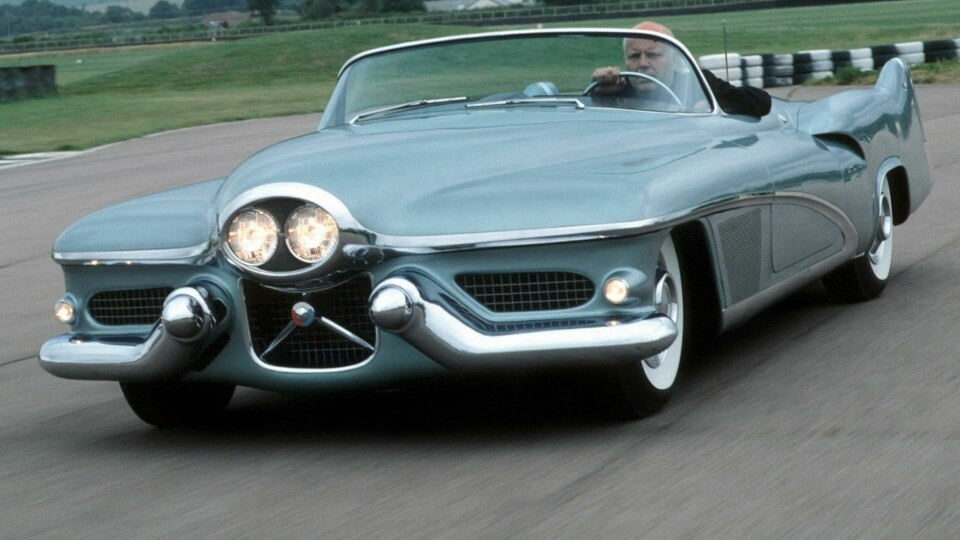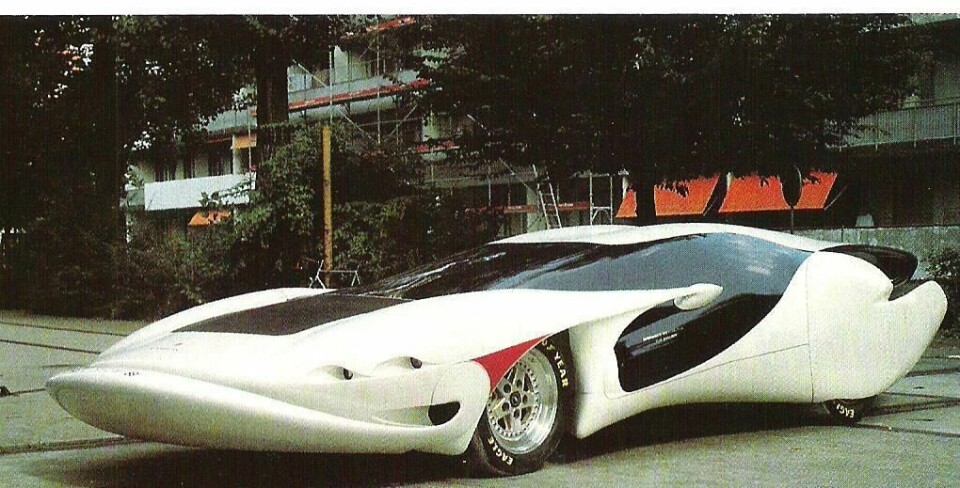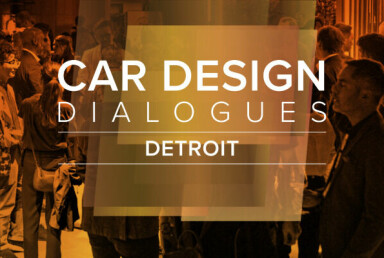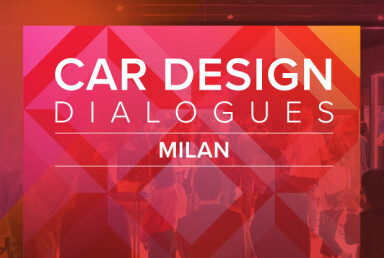
Ten strange and wonderful lighting designs from concept cars
A sampler from the weird and wonderful world of concept cars
We recently published a list of unique lighting designs of production cars of the past, present and future.
Concept cars were omitted because there just seem to be too many to name. But, as they say, “fools rush in where angels fear to tread”, and so the overwhelming desire to present some our favourites prevailed.
Are there any designs that you think we missed? Let us know through our social media channels. And look out for our livestream on lighting later this year, too, which you can register for here.
Aston Martin Bulldog
Sir William Towns! Just the name makes the hearts of Aston Martin fans beat just little faster, and the sight of the Bulldog can send one into full-on tachycardia.
The wedge-shaped dreadnought was meant for limited production (15-25 cars) but was canceled due to the anticipated cost of producing the car.
Beneath a scuttle that looks like a bonnet sits five rectangular headlights that no doubt light the center of the road ahead, but leave much to be desired with respect to peripheral vision.
Ford Indigo
This roadster concept from Ford from 1996 was a vision of a street-legal Indy car. With a 600 hp V12 engine, racing-type suspension, wide racing car-type tyres and wheels and stripped-down interior, it was definitely a fun open-wheeled street racer, with little attention to the practicalities of production cars. There was no boot, no roof, and only half a windscreen.
And where are the headlights? There is a band of LED running lights running on the leading edge of the front spoiler, along with the turn signals. But headlights are mounted on the rear-view mirrors, which themselves are mounted on stalks projecting out from the open cockpit.
That would have made for quite the DRG. One can imagine reports of UFOs cruising Woodward Avenue if the Indigo had been built. As it is, we can only imagine the possibilities.
General Motors LeSabre
Harley Earl’s personal dream machine, the LeSabre of 1951, was a statement about what General Motors cars would be in the 1950s.
The streamlined bathtubs of the 1940s would give way to huge chrome laden designers, with jet age imagery, including massive tailfins.
The name was an homage to its aircraft inspiration the North American F-86 Sabre. Typical of Earl designs, the height of the car was low, only 1300 mm, significantly lower than production cars of the time.
The headlights look like they are awkwardly placed at the lower front corners of the mask, but these are just running lights. The real headlights are hidden behind the grille in the oval jet engine-like air scoop in the center of the front mask.
Once the lights are turned on, the grille retracts, and the two headlights shine forth, give the car a vaguely cyclopean look. The motif is repeated at the rear, where a massive circular taillight sits in the center, with little taillights mounted on the fins.

Colani Corvette Charisma
The innovative and highly eccentric designs of the late Luigi Colani would seem to be a goldmine for eccentric lighting designs.But Colani was a designer principally concerned with form – lighting was frequently an afterthought.
The Corvette Charisma was an exception- its curvaceous brows sheltered recessed headlights, although these were small in overall proportion to the long body with the killer whale graphics. This Corvette concept underwent several modifications before taken to Bonneville to set a speed record for its class.
BMW Vision Next 100
Designed, along with other models as a celebration of BMW’s 100 birthday, the Vision Next 100 imagines a BMW sports sedan for the next century. Predictably loaded with advanced technology, some real, some imagined, BMW projects a sedan that unites driver and car into a driving and traveling unit, enhancing the driving experience.
The front mask reflects new thinking with some classic BMW elements- the kidney grille remains for instance, lit up with LEDs. But the headlights are LED strakes folding over the bonnet from the front mask emphasizing the flow of air over the car. A dramatic sculptural turn from BMW classic grille and headlight design.
Nissan Townpod
This underrated concept by Nissan from 2010 imagines an electric city car with a unique front design that seems more like a pet or an anime figure than a traditional car.
The headlights are chrome-plated tubes with LED lights, the ‘nose’ is a Nissan shield that flips open to allow for electric charging.
Below is a small mouth-shaped vent/opening with a Mona Lisa smile. It was a clever conceit for a country obsessed with anime, Pokemon, Tamagotchis and Hello Kitty. A city car as pet? A fun idea that deserves greater consideration.
Ford 021C
Marc Newson’s idea for a compact twenty-first century sedan, the 021C was meant to be, as his website describes, “simple, likeable, and fun”. Newson noted last year at a talk in Milan that he believes the car is more relevant now than it was back in the late 1990s when it was designed.
The front mask and rear fascia are dominated by giant LED light bars, leading many to reconsider the whole concept of “headlight” and “tail light”. Perhaps the future would be light panels, not discrete “lights”.
We are not there yet, but Newson’s design certainly broadened the field of headlight design, introducing LEDs as headlight technology, and laying the foundation for today’s more sculptural and creative light signatures and graphics.
Autobianchi 112 Runabout
Designed in 1969 by Marcello Gandini when he was at Bertone, the Runabout was a “beach car” meant for cruising in fair weather and out into the country or along the coast. It’s wedge-y form was a preview of much to come from Gandini, and of course, Fiat, which based the X1/9 on this design.
The wedge shape was at least partially based on the design of racing boats of the time, and used the mid-engine transverse 1.1 litre engine layout. The runabout had no doors, and only a small windscreen.
There was no roof, or soft-top canopy, making the Runabout a true Barchetta. Fog lights were nestled in under the long snout, but the headlights were mounted on the rear spoiler, projecting out over the sides of the car.
Mazda Nagare
The Mazda Nagare, designed by Laurens van der Acker and his team at Mazda’s design studio in California, made quite an impression when it was introduced at the Los Angeles Auto Show in 2006. A highly sculpted shooting break, it was one of a series of Mazda concept cars that engaged with the concept of “flow” and were meant to predict the marque’s future design language.
The concept of flow was reflected in the design of the sculpted body, and especially in the front mask, where leaf-shaped headlights flanked a grille that complemented the Mazda “M” logo on the bonnet. No powerplant was specified, though a hydrogen-powered rotary was mentioned as a possibility. The interior had a center driver’s seat and a U-shaped lounge for three behind.
Phantom Corsair
Developed by Rust Heinz, a scion of the family of the famous American brand of condiments and pickles, the Phantom Corsair was intended to be the first of a number of custom cars for the Hollywood set in the late 1930s.
At the time, it was not unusual for a well-known star to have his or her bespoke car built over a standard frame. Harley Earl and Howard ‘Dutch” Darrin got their start this way, and Heinz, who had experience designing boats, was convinced there was a market for his services in Tinseltown.
The proof-of-concept was the Phantom Corsair, the ultimate villain’s car- black on black on black two-door sedan. Its design reflected the ultimate in Streamlined Moderne design and was built on the chassis on another streamlined classic, the Cord 810. The car garnered enormous attention for its elimination of fenders, running boards, and futuristic features like push-button door openers, rubber and cork safety panels, and solid rubber seat foundations, eliminating springs and traditional seat frames.
The overall shape of the exterior was rather piscine, a smooth composition of body and glasshouse that seemed more like a whale or shark. The long (6 meters) body had a pointed snout that further emphasized the marine animal image. The headlights were designed to project powerful beams forward and they rose just above the level of the like eyes projecting from the body of some hitherto unknown sea creature. Fog lamps were placed just above the bumper for additional lighting in inclement weather.
Tragically, Rust Heinz would die in a car accident in 1939. He was driving a friend’s car near his family estate in Pennsylvania and was struck broadside by another vehicle. He was only 24.
The Phantom Corsair would live on and now resides in the National Automotive Museum in Reno Nevada.

























